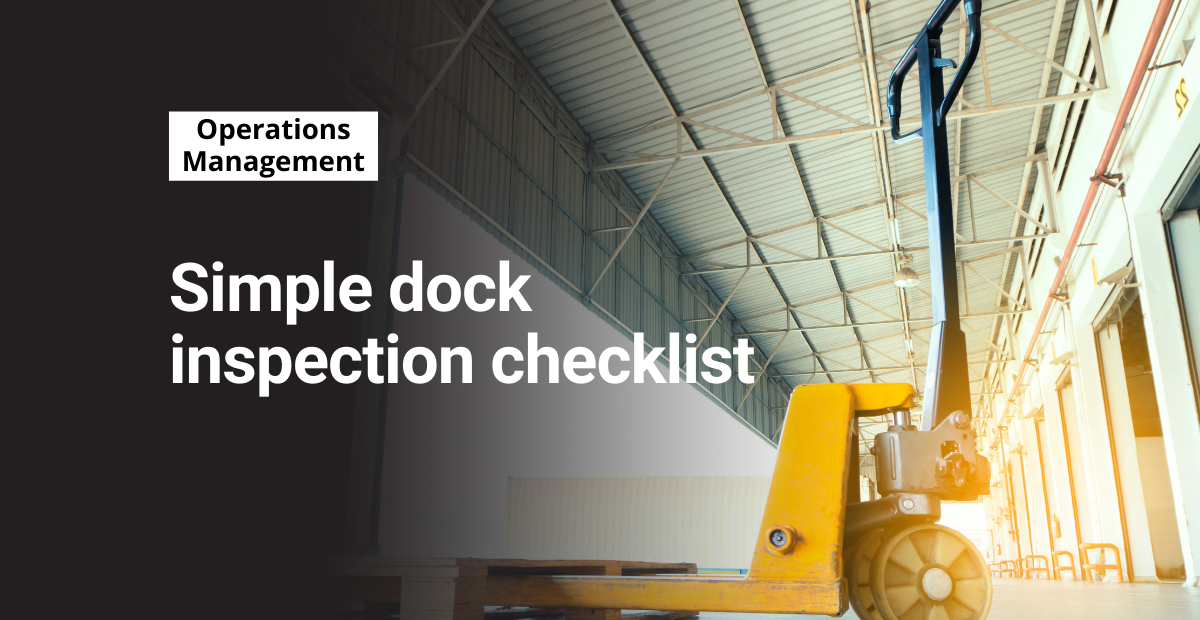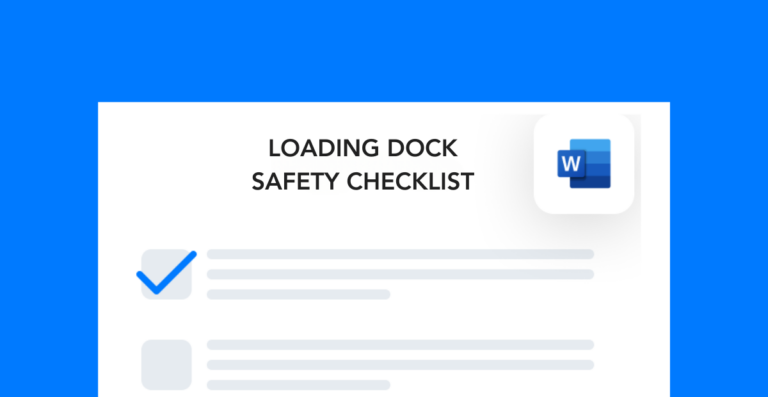When I walk the ship dock, I like to inspect three main areas: 5S/organization, equipment, and behaviors. Broadly speaking, most hazards fall into one of these three categories.
Because of how busy the area is, I’d recommend you perform a dock inspection every day. If you do, you’ll be able to avoid major issues that come with long-term neglect of equipment and processes.
Here’s a simple ship dock inspection checklist you can use to ensure the area’s safety and efficiency for organizational success.
Free checklist!
Walk your loading docks and use this checklist to make note of any hazards you find.
5S and area organization
Many of the dock improvement opportunities I’ve come across have to do with its layout and overall organization. You’ll often find that workers use storage systems in unexpected or unintended ways.
This can often create safety hazards, but it also tells you more about how best to design the dock. Instead of doubling down on your 5S approach, figure out where you can switch things up and create a better system.
- Cabinets and shelves are organized and free of clutter.
- Cords and cables are securely fastened to the floor or secured with Velcro/zip ties.
- 5S tape is in good condition.
- Batteries, tablets, scanners, and other technology are stored properly when not in use.
- Dock plates fully engage when lowered.
- Cables in the battery storage area are managed properly.
- Tracks on the trailer doors are free of damage, allowing doors to raise and lower easily.
- Step ladders are placed neatly next to trailer doors in a 5S location.
- Dock tools, paperwork, and other items are stored in their designated locations.
Dock equipment inspection
Check major dock equipment for signs of damage. You’ll also want to look for any strange “repairs’ that your team may have made to equipment. Homemade repairs present a major safety concern and should be identified quickly to avoid incidents.
- Brake systems on movable equipment like flex conveyor belts engage properly.
- Trailer door seals are in good condition to keep out rain and wind.
- Step ladders are tall enough for the tasks that employees use them for.
- Trailer fans work properly, and their cords don’t have any exposed wires.
- Pallet jacks raise and lower smoothly.
- The parking area for forklifts and other PIT equipment is sealed off from pedestrians.
Employee behaviors on the dock
No safety inspection is complete without an audit of employee behaviors. These are the top things I look for when auditing the ship dock.
- Workers lift items close to their bodies and using their legs instead of their backs.
- Workers always wear gloves while moving cargo around the dock.
- When using box cutters, workers cut away from their bodies.
- There is no food or drink (besides water) on the dock.
- When using flex conveyors, dock employees lock the brakes.
- Workers use step ladders when stacking items above their heads.
- After using pallet jacks, workers return them to their storage location.
- Employees set broken pallets aside and do not use them.
- When stacking pallets, employees put heavier items on the bottom.
This checklist isn’t fully comprehensive. You may need to add or remove list items to match the variables in your operation. You can find all these checklist items laid out in the simple template below.





